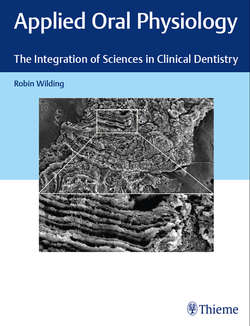Читать книгу Applied Oral Physiology - Robin Wilding - Страница 48
На сайте Литреса книга снята с продажи.
3.5.3 Cells of the Periodontal Ligament
ОглавлениеThe periodontal ligament is highly cellular. The predominant cell is the fibroblast which occupies about 50% of the volume. Fibroblasts are usually fusiform in shape, but they may, when especially active, become disk shaped. The fibroblasts of the periodontal ligament are mostly of this disk-like shape. This active form of the cell is testimony to the rapid secretion and resorption of collagen and ground substance. Breakdown of collagen used to be thought to be an extracellular process, but there is evidence that collagen fibers are phagocytosed into the cytoplasm of the fibroblast and then broken off into small fragments to be degraded within lysosomes. Fibroblasts can be both phagocytosing part of a collagen fibril at one end and secrete new fibrils at the other. This degree of activity would most likely be found in a young erupting tooth and less conspicuous in older teeth. The turnover of collagen in the ligament is one of the most rapid of any connective tissue. The half-life of collagen in the rat molar is just 1 day. Half-life is an expression which represents the speed with which a substance is altered. Thus, in 1 day, half the collagen has been replaced.
Epithelial cell rests (ECR) of Malassez are remnants of the epithelial root sheath of Hertwig and form a sparse network around the root (▶ Fig. 3.8). Lindskog and coworkers have shown that tissue cultures of the ECRs appear to inhibit the formation of bone by osteoblasts.1 The zone of inhibition is similar to the width of the periodontal ligament. They suggest that the ECRs, having epithelial origins, have the capacity to prevent ankylosis of the bone to the tooth. More recent studies have supported this work, concluding that ECRs are involved in maintaining the periodontal space.2 It is therefore possible that when the tooth is displaced in the socket, it is the reduced distance between the ECRs and bone which causes bone resorption, rather than, or perhaps as well as, tissue compression (see Chapter 7.7 Bone Remodeling).
Fig. 3.8 A histological section of the periodontal ligament (PDL) close to the cementum surface showing two nests (arrows) of epithelial cell rests of Malassez (magnification × 1,000).
Osteoblasts or osteoclasts may be found on the surface of the tooth socket, depending on the state of activity at the time of observation. Osteoclasts are derived from monocytes and are responsible for resorption of the alveolar bone. On the cementum surface of the root, cementoblasts may be found. Mast cells, macrophages, and undifferentiated mesenchymal cells may occur in small numbers in the periodontal ligament.
